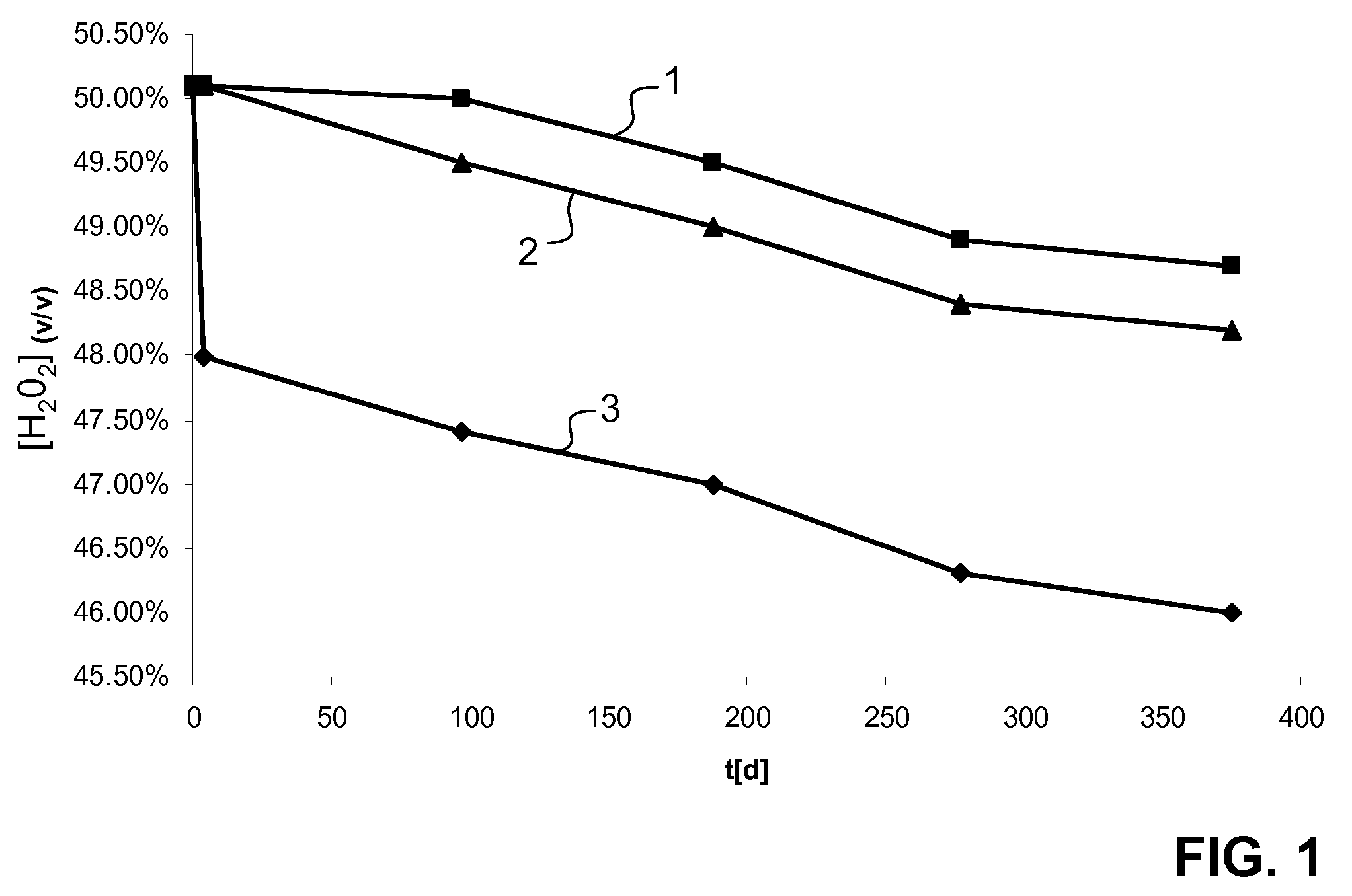Concentrate for preparing a disinfectant and methods for its preparation and use
a disinfectant and concentrate technology, applied in the field of concentrate for preparing a disinfectant, can solve the problems of unsatisfactory stability of compositions containing both hydrogen peroxide and colloidal silver, significant health problems in drinking water and water carrying equipment such as ducts and tubes, and the contamination of infectious agents such as viruses, bacteria and fungi, and achieve good long-term stability.
- Summary
- Abstract
- Description
- Claims
- Application Information
AI Technical Summary
Benefits of technology
Problems solved by technology
Method used
Image
Examples
example 1
Preparation of a Concentrate Containing Sodium Nitrate
[0049]50 grams of a stabilizer (gum arabic “quick-gum type 8074”, purified and standardized, E414 / CAS 9000-01-05; Alfred L. Wolff, D-Hamburg) were dissolved in 950 ml of deionized water (conductivity at or below 0.1 μS / cm) at 55° C.; the mixture was filled into an agitator (stainless steel V2A or V4A, slow-running horseshoe mixer, heating and cooling facilities, pressure controllable up to 3 bar; passivated before use) and stirred for approximately 15 minutes. 400 ml of phosphoric acid (CAS 7664-38-2, 85%, purum; Fluka Chemie, CH-Buchs) were slowly added, yielding a pH of 1.2, and the resulting mixture was stirred for 30 minutes while the temperature was reduced to 50° C. 600 ml of an aqueous solution of sodium nitrate (CAS 7631-99-4, ultra pure; Fluka Chemie, CH-Buchs) were slowly added, and the resulting mixture was stirred during 30 minutes. 10,000 ml of aqueous colloidal silver (Argentum colloidale, CAS 7440-22-4, 120 g / l in ...
example 2
Preparation of a Concentrate Containing Sodium Sulfate
[0051]A second concentrate was prepared as in example 1, wherein sodium nitrate was replaced by the same amount of sodium sulfate.
example 3
Preparation of a Concentrate without Sodium Salt
[0052]A concentrate was prepared as in example 1, however, without adding sodium nitrate, sodium sulfate or any other salts.
PUM
| Property | Measurement | Unit |
|---|---|---|
| temperature | aaaaa | aaaaa |
| temperature | aaaaa | aaaaa |
| diameter | aaaaa | aaaaa |
Abstract
Description
Claims
Application Information
 Login to View More
Login to View More - R&D
- Intellectual Property
- Life Sciences
- Materials
- Tech Scout
- Unparalleled Data Quality
- Higher Quality Content
- 60% Fewer Hallucinations
Browse by: Latest US Patents, China's latest patents, Technical Efficacy Thesaurus, Application Domain, Technology Topic, Popular Technical Reports.
© 2025 PatSnap. All rights reserved.Legal|Privacy policy|Modern Slavery Act Transparency Statement|Sitemap|About US| Contact US: help@patsnap.com

